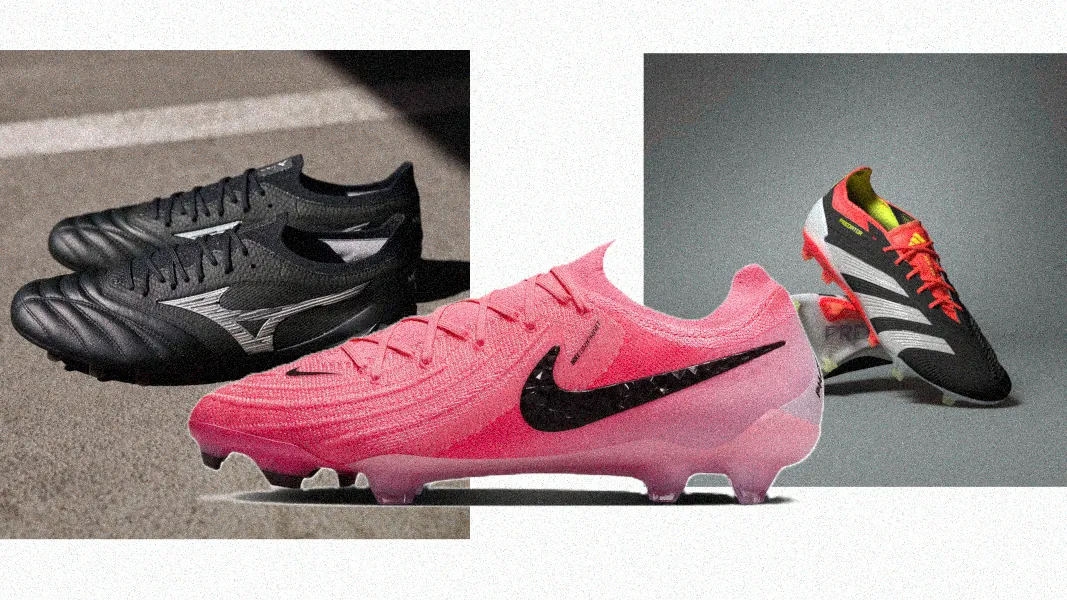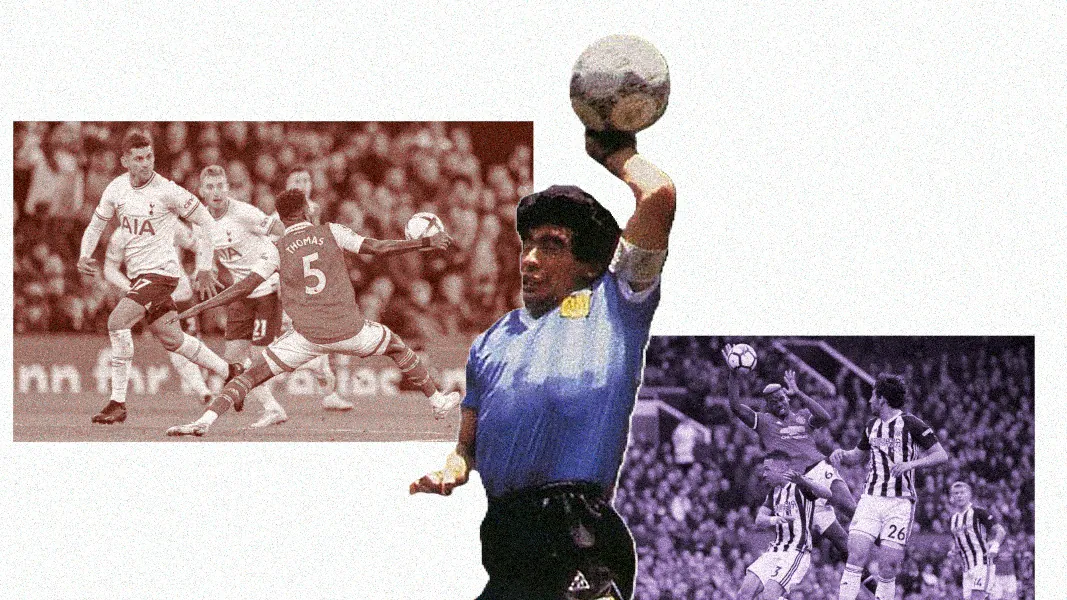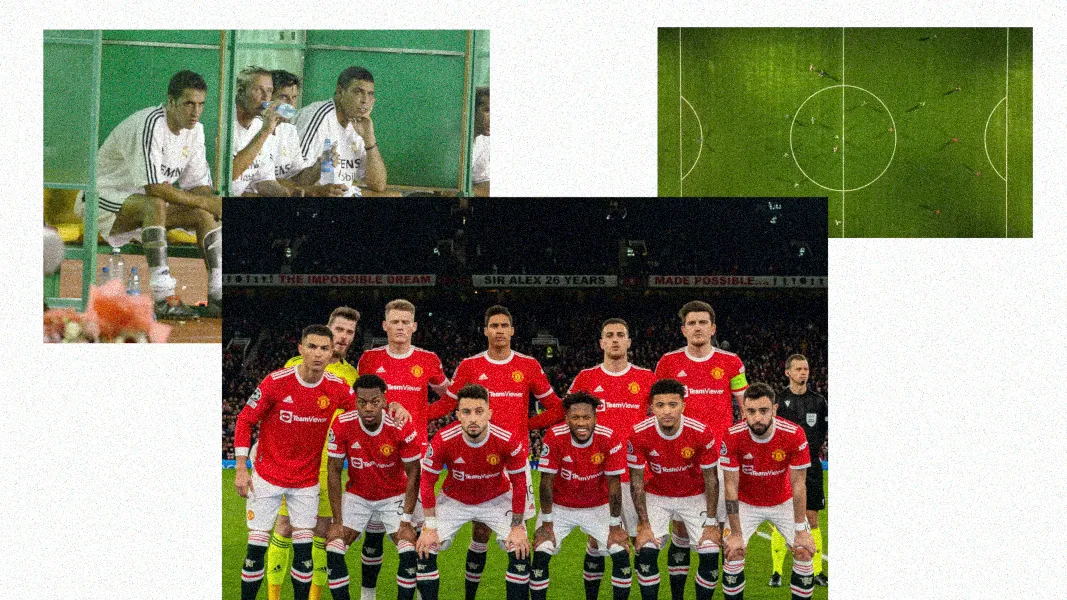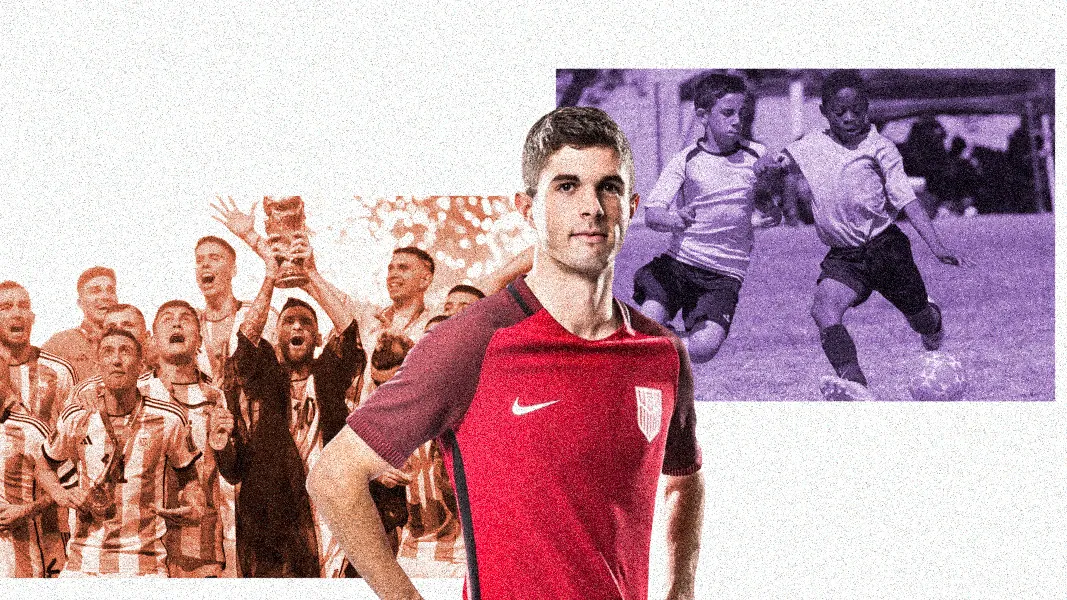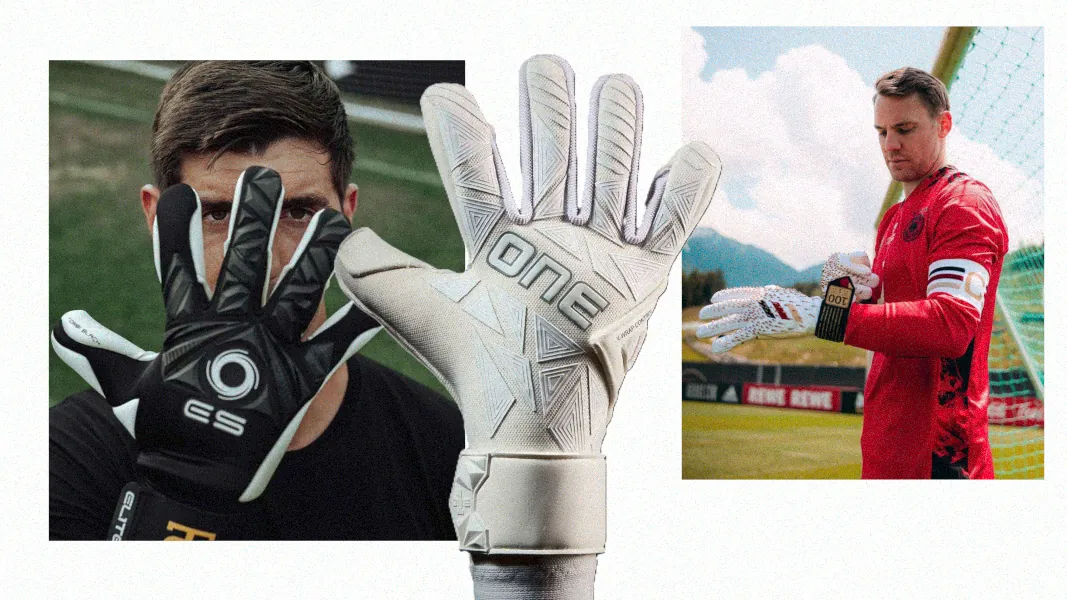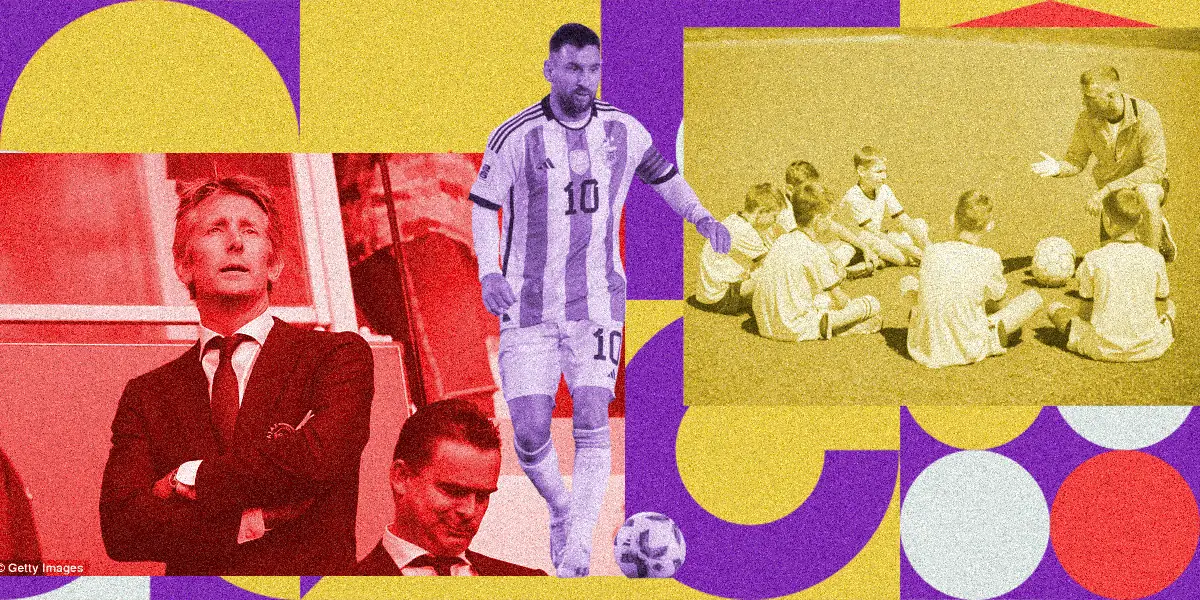In this guide, I will walk you through the most common 7v7 soccer formations and how to use them.
7v7 soccer is a modified form of the traditional 11-a-side game. In this format, each team consists of seven players on the field at a time. The game is played on a smaller pitch, which encourages faster, more dynamic play.
Effective formations in 7v7 soccer are vital for strategic play. They dictate how players position themselves on the field. A well-chosen formation maximizes strengths and minimizes weaknesses.
In this discussion, we will delve into various formations like the 2-3-1, 2-2-2, 3-2-1, and more. We’ll unravel defensive strategies such as zonal marking and man-marking, and dissect attacking tactics like building from the back and creating overloads in midfield.
If you want to have all the formations on the go, you can download the 7v7 Soccer Formations PDF here.
Player Positions and Roles in 7v7 Soccer
- Goalkeeper: Guards the goal, preventing the opposing team from scoring. They possess unique privileges, like using their hands within the penalty area.
- Defenders: Their primary duty is to shield the goal. They mark opposing attackers, intercept passes, and initiate attacks from the back.
- Midfielders: They operate in the middle of the field, linking defense and offense. They control the game’s tempo, distribute passes, and support both ends.
- Forwards: Their focus lies in scoring goals. They exploit openings in the opponent’s defense and work closely with midfielders to create goal-scoring opportunities.
Field Dimensions in 7v7 Soccer
The dimensions of a 7v7 soccer field are smaller than the standard 11-a-side pitch.
- Length: Typically, the field measures between 50 to 70 yards.
- Width: It is usually 30 to 50 yards wide.
The penalty area is smaller, about 12 yards from the goal line. Corner flags mark the corners of the field.
The reduced size creates a more intimate and dynamic playing environment, encouraging quicker gameplay and increased player involvement.
Common 7v7 Soccer Formations
2-3-1 Formation

In the 2-3-1 formation, there are two defenders, three midfielders, and one forward.
- Defenders (2): Positioned at the back, they provide a strong defensive barrier in front of the goalkeeper.
- Midfielders (3): Occupy the middle of the field, acting as the link between defense and offense.
- Forward (1): The lone striker, responsible for creating goal-scoring opportunities.
The 2-3-1 formation is effective when a team seeks a balanced approach. Use it if you’re aiming to maintain control of the game while maintaining defensive stability.
- Offensive Strength: With three midfielders, there’s a strong presence in the middle of the field, aiding in possession and attack.
- Defensive Stability: Two defenders provide a solid backline, reducing vulnerability to counterattacks.
- Quick Transition: This formation facilitates swift transitions from defense to offense, crucial for counter-attacking play.
Pros:
- Strong midfield presence.
- Effective transition from defense to offense.
- Balanced defensive setup.
- Allows for quick counter-attacks.
Cons:
- Limited width in attack.
- Vulnerable to counter-attacks down the flanks.
- Relies heavily on midfield coordination.
- Requires disciplined positioning from players.
- Less defensive cover compared to other formations.
2-2-2 Formation

In the 2-2-2 formation, there are two defenders, two midfielders, and two forwards.
- Defenders (2): Positioned at the back, they form a sturdy defensive line in front of the goalkeeper.
- Midfielders (2): Occupy the middle of the field, acting as a bridge between defense and offense.
- Forwards (2): Positioned upfront, they are the primary goal-scoring threats.
The 2-2-2 formation is chosen for a balanced approach. It suits teams looking to maintain a balanced playstyle, equally emphasizing defense and offense.
- Solid Defense: With two defenders, there is a strong defensive foundation to repel attacks.
- Midfield Dominance: Two midfielders ensure control over the center of the pitch, aiding in ball distribution and possession.
- Attacking Threat: Two forwards provide a potent goal-scoring presence.
Pros:
- Balanced midfield and attack.
- Provides solid defensive structure.
- Enables effective ball distribution.
- Supports both offensive and defensive transitions.
- Allows for versatile player roles, especially the forwards who can drop in midfield.
Cons:
- Vulnerable to counter-attacks with fewer defenders.
- No width in attack.
- Requires strong midfield coordination.
- Can be challenging to maintain formation discipline.
3-2-1 Formation

In the 3-2-1 formation, there are three defenders, two midfielders, and one forward.
- Defenders (3): Positioned at the back, they create a robust defensive line.
- Midfielders (2): Occupy the middle of the field, serving as a link between defense and attack.
- Forward (1): The sole striker, responsible for goal-scoring.
The 3-2-1 formation is effective when a team seeks a strong defensive foundation and midfield control. It’s suitable for teams looking to emphasize a compact defense while maintaining midfield strength.
- Solid Defense: With three defenders, it offers a sturdy backline.
- Midfield Dominance: Two midfielders ensure control over the central area, aiding in possession and distribution.
- Lack of Offensive Presence: The lone forward provides a goal-scoring threat.
Pros:
- Solid defensive structure.
- Strong midfield control.
- Effective ball distribution.
Cons:
- Vulnerable to attacks down the flanks.
- Limited width in attack.
- Scoring heavily relies on the lone forward.
2-1-2-1 Formation

A variation of the 2-3-1 formation, in the 2-1-2-1 formation, there are two defenders, one defensive midfielder, two midfielders, and one forward.
- Defenders (2): Positioned at the back, they form a defensive barrier.
- Defensive Midfielder (1): Occupies the center, acting as a pivot between defense and offense.
- Midfielders (2): Positioned in the middle, linking the defense and the attack.
- Forward (1): The primary goal-scoring threat.
The 2-1-2-1 formation is effective when a team seeks a balanced and sturdy structure. It’s suitable when you’re looking to maintain a solid defense while having a balanced presence in midfield and attack.
- Solid Defense: With two defenders, it provides a sturdy backline.
- Midfield Pivot: The defensive midfielder serves as a crucial link between defense and attack.
- Balanced Attack and Defense: The formation supports both offensive and defensive transitions.
Pros:
- Strong defensive structure.
- Defensive midfielder provides extra protection to the backline.
- Balanced midfield control.
- Effective ball distribution from the defensive midfielder.
Cons:
- Vulnerable to counter-attacks with fewer defenders.
- Limited width in attack.
- Strain on defenders with fewer numbers.
- Scoring heavily relies on the lone forward.
Unorthodox 7v7 Soccer Formations
1-1-3-1 Formation

In the 1-1-3-1 formation, there is one defender, one defensive midfielder, three midfielders, and one forward.
- Defender (1): Holds a central defensive position.
- Defensive Midfielder (1): Acts as a link between defense and midfield.
- Midfielders (3): Occupy the middle, offering both defensive and offensive support.
- Forward (1): The primary goal-scoring presence
The 1-1-3-1 formation is effective when a team emphasizes a strong midfield presence along with a focused attack.
- Midfield Dominance: With three midfielders, it offers control over the central area of the pitch.
- Defensive Stability: The defensive midfielder provides a shield for the lone defender.
- Focused Attack: The formation supports a concentrated offensive approach.
Pros:
- Strong midfield control.
- The three midfielders can spread and provide width on the attack.
- Balanced offensive presence.
- Effective ball distribution from the defensive midfielder.
Cons:
- Vulnerable to counter-attacks with fewer defenders.
- Reliant on the lone defender for defensive stability.
1-4-1 Formation

1-4-1 is a highly attacking formation. In it, there is one defender, four midfielders, and one forward.
- Defender (1): Holds a central defensive position.
- Midfielders (4): Occupy the middle, providing both defensive and offensive support.
- Forward (1): The primary goal-scoring presence.
The 1-4-1 formation is effective when a team seeks to control the midfield while maintaining a potent attacking presence.
- Midfield Dominance: With four midfielders, it ensures control over the central area of the pitch.
- Fluid Defense: The lone defender is supported by a strong midfield line.
- Concentrated Attack: The formation supports a focused offensive approach.
Pros:
- Strong midfield control.
- The fluid nature of midfield provides width, if needed.
- Effective ball distribution from the midfield.
- Versatile player roles.
Cons:
- Vulnerable to counter-attacks with fewer defenders.
- Requires disciplined positioning.
- Defensive stability hinges on the lone defender.
How to Adapt Formations to Your Team
Adapting formations to your team is a crucial aspect of effective soccer strategy. It involves assessing the strengths and weaknesses of individual players and aligning them with a formation that maximizes their abilities.

For instance, if you have skilled midfielders who excel in possession play, a formation like 2-3-1 or 1-4-1 can amplify their impact. Conversely, if you possess a potent forward line with exceptional goal-scoring abilities, a formation like 1-1-3-1 could emphasize their strength.
Also, the adaptability of formations extends beyond player abilities. Consider the team’s overall style of play. Are you inclined towards a possession-oriented approach or a more direct, counter-attacking style? This preference should inform your choice of formation.
For instance, a possession-focused team may find success in a 2-2-2 setup, while a counter-attacking team may thrive in a 3-2-1 formation.
Defensive Strategies for 7v7 Soccer Formations
Pressing High vs. Sitting Deep
Pressing high entails positioning defenders and midfielders further up the field, aggressively engaging opponents near their own goal. This strategy aims to disrupt the opponent’s build-up play, applying pressure to force errors and regain possession in advantageous positions.

It demands quick decision-making, coordination, and a high level of fitness from players. However, it also leaves space behind the defensive line, potentially exposing the team to fast counter-attacks.
Conversely, sitting deep involves maintaining a compact defensive shape closer to your own goal. This strategy prioritizes denying space for opponents to exploit. It can be particularly effective against teams with speedy forwards or exceptional dribblers.

Sitting deep requires disciplined positioning and quick transitions to capitalize on turnovers. However, it may allow the opposing team more time and space to control the game and create scoring opportunities.
Zonal vs. Man-Marking
Zonal marking involves players defending specific zones or areas on the field rather than marking specific opponents.

This strategy aims to collectively cover spaces, making it harder for opponents to find gaps or receive passes. It requires players to communicate effectively and maintain their positions, ensuring that each zone is adequately covered.
Zonal marking is particularly effective when facing teams with intricate passing patterns and movement.
On the other hand, man-marking involves assigning a specific player to mark an opponent throughout the match.

This strategy aims to neutralize key threats by closely shadowing them and denying them space. It requires individual defenders to maintain tight proximity to their assigned opponent.
Man-marking can be particularly effective against teams with standout players who tend to dictate the flow of the match. However, it also poses risks, as it can create spaces elsewhere on the field that opponents may exploit.
Attacking Strategies for 7v7 Soccer Formations
Building from the Back

Building from the back is a deliberate attacking strategy that begins with the goalkeeper and defenders. It emphasizes possession and patient buildup play, starting from the defense and progressing forward.
This approach allows the team to maintain control and dictate the pace of the game from the earliest stages. It requires a high level of technical proficiency from defenders and midfielders, as they must be adept at circulating the ball under pressure.
Building from the back enables the team to draw opponents out of their defensive positions. As defenders advance with the ball, it forces opposing forwards and midfielders to press higher up the field, creating gaps in their defensive structure. This can lead to opportunities for incisive passes and forward runs.
Building from the back is particularly effective for teams looking to control possession and break down organized defenses.
Creating Overloads in Midfield

Creating overloads in midfield seeks to outnumber the opposition in the central area of the pitch. This tactic involves committing additional players to the midfield zone, thereby gaining numerical superiority.
By doing so, the team gains control of the midfield battle, which is often the heart of playmaking and distribution. It requires intelligent positioning and coordinated movement from midfielders and, at times, forwards dropping deeper to participate.
This approach provides multiple benefits. It allows the team to dominate possession, dictate the tempo, and control the flow of the game.
With more players in midfield, there are increased passing options, creating opportunities for intricate combinations and quick transitions.
However, it’s important to note that overloading the midfield requires precise execution. Players must maintain their positions, communicate effectively, and anticipate movements to sustain the numerical advantage. It also demands a balance between midfield dominance and defensive coverage.
Exploiting Width and Channels

Exploiting the width involves pushing players out wide, towards the touchlines, and utilizing the space in the flanks. This widens the playing area and stretches the opposition’s defense, creating more room for your team to maneuver.
It also forces the opposing players to cover larger distances, potentially leading to defensive disorganization.
This tactic is particularly effective for teams with quick, skillful wingers who can exploit the additional space and deliver dangerous crosses into the box.
This approach also demands precise timing in passes and runs, as the window of opportunity in the channels can be narrow.
Furthermore, exploiting width and channels is a versatile tactic that can be adjusted based on the team’s strengths and the opponent’s weaknesses. It can be used to launch quick counter-attacks or to patiently build up play. It also offers the option of switching play from one flank to the other, keeping the opposing defense constantly adjusting and reacting.
However, it’s important to maintain balance and not become overly reliant on wide play, as this can potentially leave the central areas vulnerable.
Conclusion
So there you have it, a breakdown of the best formations to use in 7v7 soccer. We’ve also covered some common attacking and defensive strategies to complement those strategies.
If you want to have all the formations on the go, download the PDF here.
I hope you enjoyed this article on 7v7 soccer formations and found it insightful. If you did, then do consider sharing it with fellow soccer enthusiasts.
Your support and sharing of this content can help us reach a wider audience and provide valuable information to more people who share our passion for the beautiful game.
Thank you for supporting Soccer Mavericks!
If you liked this article, you will love reading:
- Top 17 Soccer Players Who Wear The Number 17 Jersey
- What is a Defensive Line Break in Soccer? (And How to Do It)
- How Long Are High School Soccer Games: A Complete Guide
- What Are the Soccer Positions Called? A Comprehensive Guide
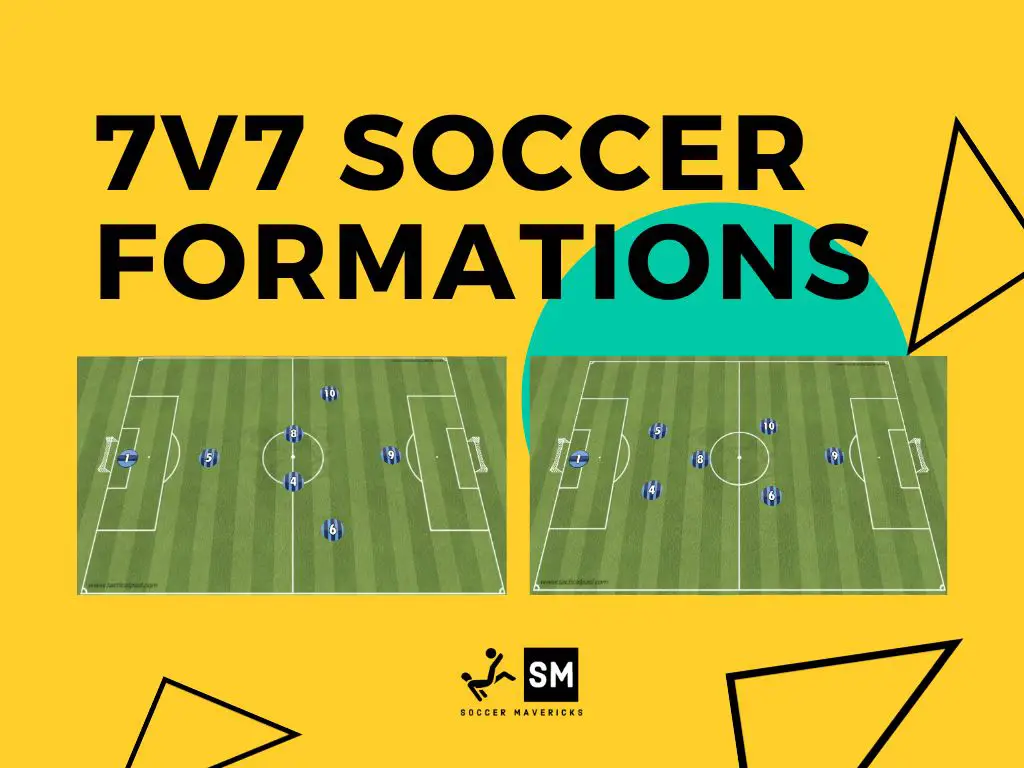
![7v7 Soccer Formations: Comprehensive Guide [with PDF] via @thesoccermavericks](https://i0.wp.com/soccermavericks.com/wp-content/uploads/2023/09/7v7-soccer-formations-pdf.jpg?fit=1024%2C768&ssl=1)
